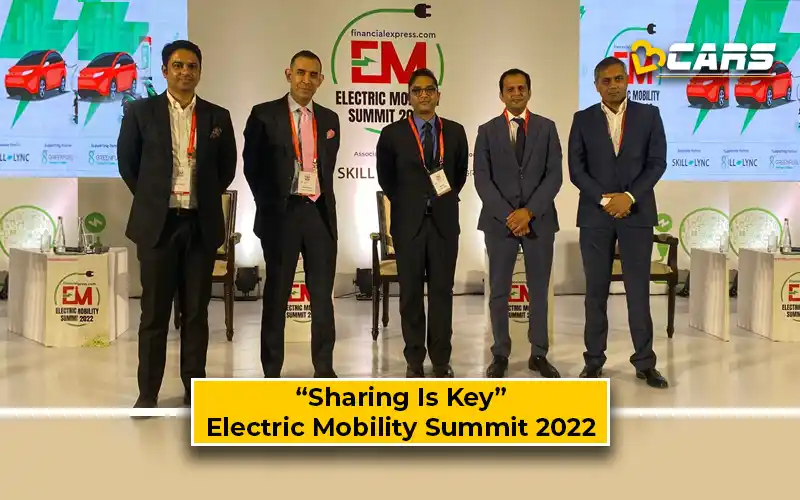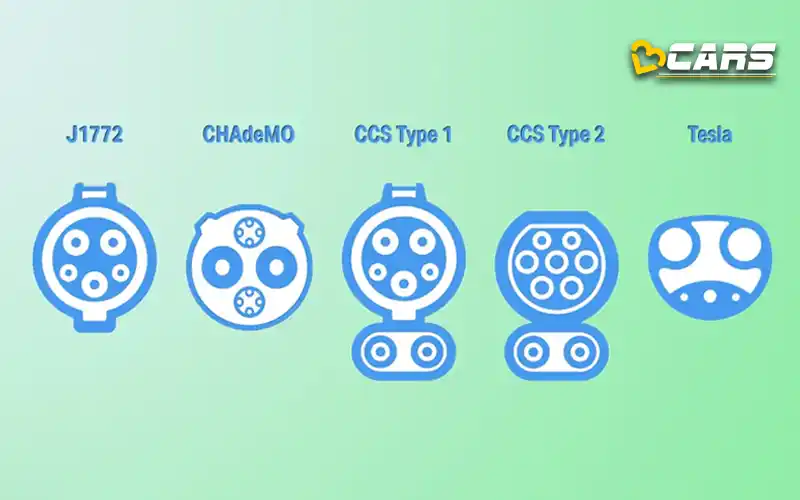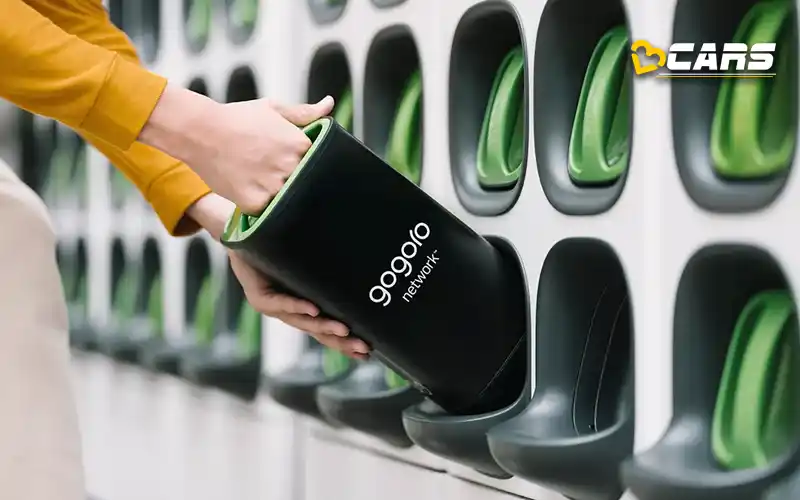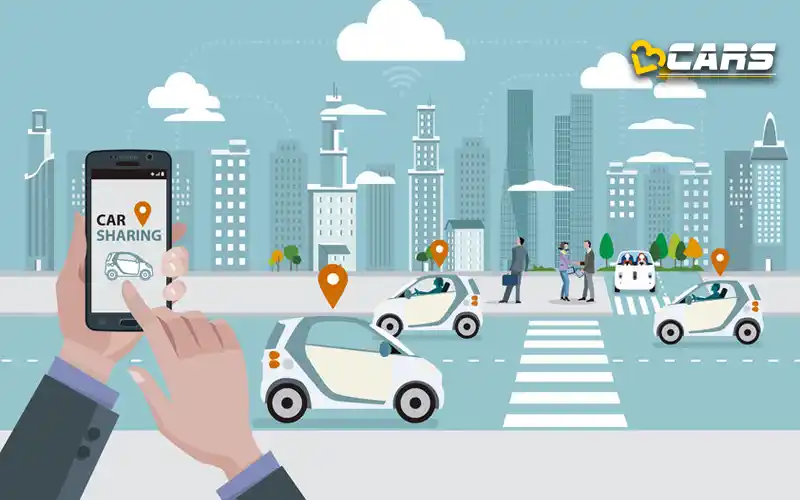Sharing - Key To Improving Electric Car Usage And Adoption (Electric Mobility Summit 2022) | V3Cars
At the Electric Mobility Summit 2022, organised by Financial Express, top panel members unanimously agreed that ‘sharing’ is the key to accelerating electric vehicle adoption, penetration and usage. The electric mobility think tank shared 4 main areas where sharing can help with reducing our carbon footprint, dependence on fossil fuels and cutting R&D costs.

The panel discussion focussed on discussing whether battery swapping was a better approach than fixed and fast charging. The following members were part of this discussion:
- Uday Narang, founder and chairman of Omega Seiki Mobility
- Sudhanshu Agarwal, EVP of EVs and exports at Piaggio India
- Arvind Chandra, CEO, Spark Minda
- Divay Pranav, director of policy at Yulu
Also Read: Upcoming 10 New Tata EVs - Body Styles & Segment Guesstimates
Mahindra Could Source Batteries For Next-Gen Electric SUVs From BYD
Note: Check your car’s fuel cost with Fuel Cost Calculator in India
Let’s discuss these 4 areas of sharing in some detail.
1. Vehicle Charging Interface Sharing

Currently, carmakers across different regions of the world and India are following different charging interface solutions. CCS2 is the most common in Europe for AC and DC fast charging but the CCS type 1 socket is more common in the American region. Similarly, Japan, South Korea and China have their own respective charging interface standards. Then, the world’s most popular electric carmaker, Tesla, have their own socket design.
The Indian government is yet to come up with a single, standard solution for charging and therefore, manufacturers are free to adopt whatever they find appropriate. Ola Electric, for instance, have their own socket, which is completely unique and not compatible with major international standards. However, Ola intend to establish their own fast charging network to make sure their customers have enough fast charging stations to juice up in a pinch.
This still leaves their customers with fewer options if they intend to charge at other public charging stations. They have to make it work with Ola’s charging station even if another option fits their driving pattern and route while offering more convenience.
Thus, even if we have a large number of public charging stations and electric vehicles in a few years, they’ll have to plan their route and charging stops because of compatibility issues. If all charging stations had a compatible plug, then it becomes easier and less risky even for range-conscious customers to opt for an electric vehicle.
Electric vehicle manufacturers of all segments and body styles need to leave their profits aside and come together to identify the most efficient standard — from manufacturing, ease-of-use and current transmission standpoint. It’ll eventually help all manufacturers improve their bottom lines.
2. Battery Sharing (For Swapping)

The battery is the single most expensive component in an electric vehicle. This is also increasing the upfront cost of the EVs and limiting its adoption despite significantly lower running and maintenance costs during the ownership.
A model where the manufacturer only sells the vehicle (without the battery) and leases the battery pack to the customer will drastically reduce the upfront cost of EVs. This also takes the burden of efficient reusing and recycling of the battery pack off the customer’s head during the long-term ownership of an EV.
The battery sharing model will mean that the carmakers will have to agree upon a common geometry and connectors for charging the battery. It also opens up the battery swap model, which takes care of the long wait times at the charging station. At the kiosk, the batteries can charge fast or slow, it won’t matter if you can get a refill in minutes. But, it’s possible only if most electric cars and motorcycles share the same battery geometry and charging interface.
Note: Check your Car EMI with our - Car Loan EMI Calculator
3. Data Sharing

Let’s say an electric carmaker finds out during their vehicle road testing that their test car lost 20% of its charge just because of sitting out in a snowstorm. At the same time, another EV manufacturer found out that frequently performing hard acceleration runs on a sunny afternoon in May in Rajasthan caused the battery pack to catch fire.
With this knowledge, the first carmaker will find a way to insulate or keep the battery warm so that it can better deal with colder climates. Meanwhile, the second carmaker will find a way to keep the battery pack cool on a hot day. They may even prevent the vehicle from accelerating too hard if the battery temperature is beyond a certain level.
Now, they both can choose to keep their test results secret. In this case, the first carmaker in our example will still have to spend money to test the vehicle in hot climate while the second one will have to perform the tests in cold weather from scratch.
Now, if they share their findings with each other, they can both accelerate their vehicle test duration and cut costs in the process. With the data sharing, they can still choose to do the testing in the other climatic conditions but it’ll still save them a lot of time as they have a point of reference to start with. Thus, they both can drastically cut down their go-to-market deadlines and offer safer, high-performing and reliable vehicles to their customers much sooner than they anticipated.
4. Vehicle Sharing

Vehicle sharing is another crucial piece of the puzzle to cut down emissions and accustom more and more people with the electric vehicle experience.
Akash Gupta, the CEO of Zypp, also shared a telling metric in another panel discussion. He said that they wanted to enter the personal mobility space but their research showed that almost all 2-wheeler owners drove under 40km in a day and most rode under 30km per day.
If your goal is to sell more vehicles, then making an aspirational product with beautiful design with a sensible price point and a respectable range makes the most sense. But to truly cut down on the carbon footprint, the distance covered with an electric vehicle matters more than the number of vehicles sold. One electric vehicle covering 100km+ every single day will have a bigger role to play in cutting down the pollution than 3 EVs, which run 30km per day every business day. So, pivoting to the B2B side was a no-brainer for Zypp as their aim was to increase the electric vehicle usage and not the electric vehicle sales.
Higher usage is also beneficial for the electric vehicle owner as they recover the higher upfront cost they’re paying for the EV much sooner. Therefore, the early adopters of electric cars in the passenger car sector are often customers who have a very high usage.
Also Read: Tata Tiago EV Vs Petrol-Automatic - Kilometre-To-Breakeven Calculation
Tata Tiago EV Vs CNG-Manual - Kilometre-To-Breakeven Calculation
Should Hyundai, Maruti, Tata, Kia Worry About Ola Electric Car? - Opinion
The major hurdles in vehicle sharing are the car owners and policy makers. Currently, there’s no concrete policy for vehicle sharing and the onus of paying a traffic ticket lies with the person who owns the vehicle. If the government were to draft a policy, which encourages vehicle sharing, then it can drastically reduce the use of petrol/diesel vehicles.
However, the car owners are the second hurdle on the way to vehicle sharing. Our vehicles are our status symbols, we can’t carry our business portfolio or show our bank accounts and properties we own. So, the easiest way to project our net worth and show how far we’ve come in life is the vehicle we drive. We love them so much that we sometimes even refrain from sharing it with our family members. We sometimes forget that at the end of the day, it’s an appliance meant to take us from point A to B.
The concept of sharing our vehicles with a dozen other people is alien to us as we’re afraid that the other people may abuse it. Perhaps we are worried about that because we ourselves are guilty of doing so. Or at least, we’re less careful with others’ vehicles than we’re with our own.
Conclusion
We all have a role to play in improving the quality of the air we breathe and helping cut our dependence on expensive fossil fuels. The carmakers need to leave the prospects of future profits alone for a while and come together on standardisation and data sharing. The people need to get used to using vehicles with care if not with love, regardless of who owns it in the government records. And the government officials too need to advance their policies, which encourage citizens to share vehicles so that there are fewer vehicles on the road and those that are using the road are optimally used.
Also Read: The First Ola Electric Car Will Use Ola’s Own Battery Cells
Mahindra Showcase 5 New Electric SUVs, 2 New Electric Sub-Brands Launched


0 Comments